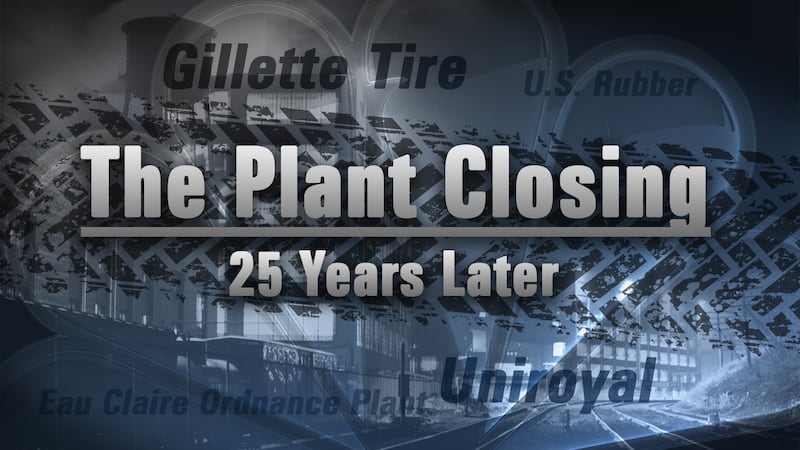The Shutdown: 25 Years Later

Tires are as much a part of Eau Claire’s history as sawdust.
“In 1917, it really helped make the transition from lumber to the modern era. It really was the industry that had to come in, in order for Eau Claire to continue developing as its own”, said Carrie Ronnander, director of the Chippewa Valley Museum.
The first tire came off the line of the Gillette Safety Tire Company in May, 1917. The U.S. Rubber Company owned it outright by 1940.
During the early years of World War II, the company sold the plant briefly to the U.S. Government, where it made ammunition.
After the war, it was back to making tires, with expansions and improvements. “The plant was really a central part of the community for much of the twentieth century”, said Ronnander.
For years, employment and production fluctuated at the plant with the demands of the market.
By 1965, it was ranked the third largest tire plant in the country. Soon after, came the name change to Uniroyal.
In the 1980’s, Uniroyal and the B.F. Goodrich company merged in a joint venture to become the Uniroyal-Goodrich Tire company. Later in the decade, Michelin bought the plant and within a year of the buyout, came the announcement workers didn’t want to hear.
On January 8, 1991, the company announced it would close the Eau Claire plant. “By that time, myself and I think for most of us, it was like we were blindsided”, said Dennis Miller, who had started at the plant in 1976. “It’s still sad to see it go, I could still have tears very easily”, said Darrel Wekkin, who worked at the plant for 27 years and was president of Union 19 at the time of the announcement.
Both Darrel and Dennis say shock was the first of many emotions they felt. “It was like a death in the family. Someone would ask and well, it was just like a death in the family”, said Miller.
A lot of factors were cited for the closing that would put 1,358 people out of work: The plant was old, the economy was slow. One thing that wasn’t a factor: The strength of the workforce. “We had a skilled workforce. Let’s face it, in the tire factories today, there still wouldn’t be a better workforce than we had 25 years ago. I figure about 10,000 a shift is what the goal was. That’s a lot of tires”, said Wekkin.
It was a year and a half after the announcement that the plant shut down for good, June 26, 1992. Miller and several other workers went on to other Uniroyal plants in other states. Many of them, like Miller, came back. Others went to school, or found other jobs, and some struggled.
In the end, Wekkin says it was difficult to lose a job that meant making a good living for your family and a plant that housed more than tires.
According to Wekkin, “I dream about this place more than anything else. It’s in your mind and I really believe that any person that put any number of years in, it stays with you a lifetime”.
.